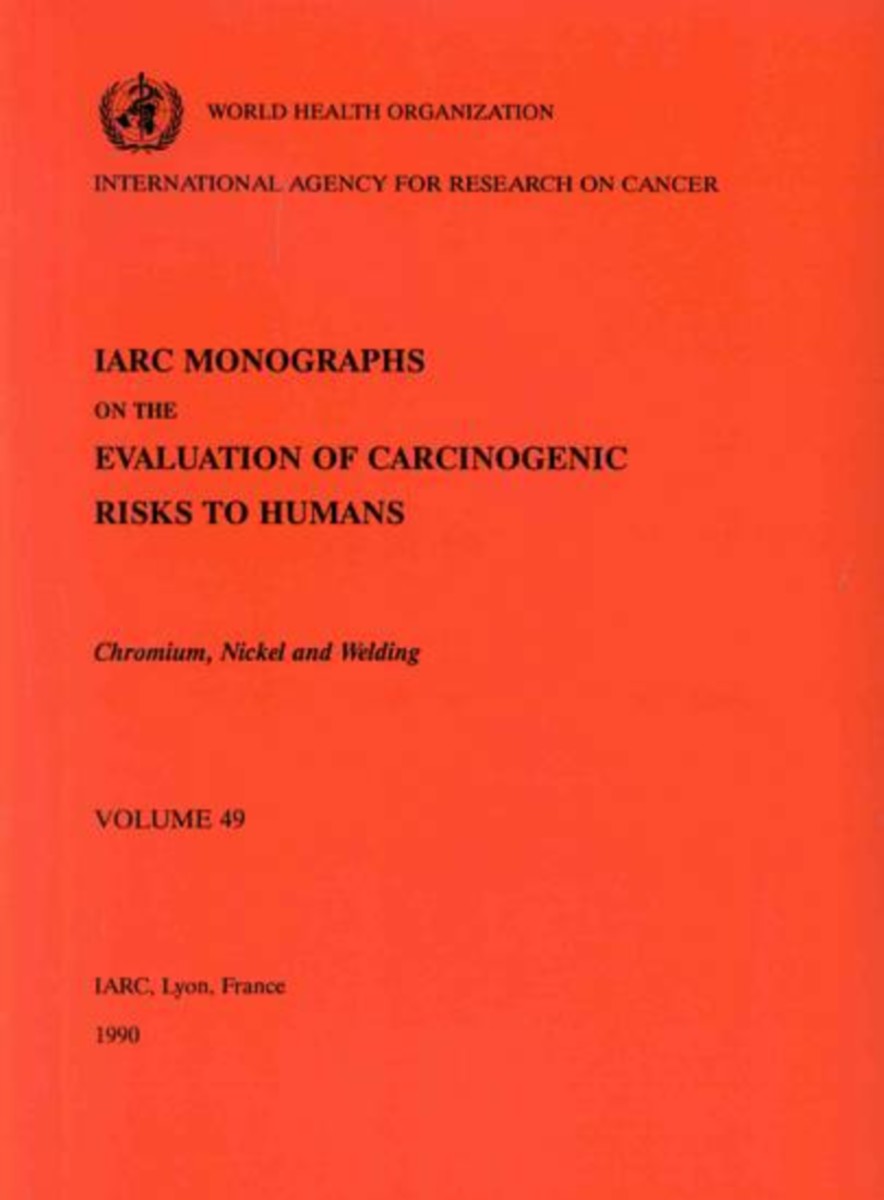Chromium, Nickel and Welding
- Publisher
World Health Organization - Published
1st October 1990 - ISBN 9789283212492
- Language English
- Pages 685 pp.
- Size 6.75" x 9.5"
Evaluates the carcinogenic risk to humans posed by industrial exposure to chromium and its compounds; nickel and its compounds; and welding fumes and gases. Occupational exposures, principally by inhalation, are noted to affect about three million workers worldwide. The first and most extensive monograph evaluates the carcinogenicity of chromium and its compounds. The monograph is divided into subsections based on the oxidation state and solubility of the compounds, with separate evaluations made for metallic chromium, chromium [III] compounds, chromium [VI] compounds, and for a fourth group of tested agents that were of mixed or unknown oxidation states. The most extensive sections evaluate the design and findings of over 500 investigations of carcinogenicity in animals and experimental systems, studies of metabolic fate in animals and humans, and case reports and epidemiological studies in human populations. On the basis of this evaluation, the monograph concludes that chromium [VI] is carcinogenic to humans. The carcinogenicity of chromium [III] and of metallic chromium could not be determined on the basis of available evidence.
The second monograph presents similar information for metallic nickel and nickel alloys, nickel oxides, and hydroxides, nickel sulfides, nickel salts, and other nickel compounds. Nickel carbonyl is identified as the most acutely toxic nickel compound, causing severe damage to the respiratory system in experimental animals and in humans. The evaluation concludes that nickel compounds are carcinogenic to humans and that metallic nickel is possibly carcinogenic to humans.
The final monograph evaluates the carcinogenic risk posed by exposure to welding gases and fumes. On the basis of evidence from human and animal studies, welding fumes are classified as possibly carcinogenic to humans.
The International Agency for Research on Cancer
The International Agency for Research on Cancer (IARC) is part of the World Health Organization. IARC's mission is to coordinate and conduct research on the causes of human cancer, the mechanisms of carcinogenesis, and to develop scientific strategies for cancer control. The Agency is involved in both epidemiological and laboratory research and disseminates scientific information through publications, meetings, courses, and fellowships.


